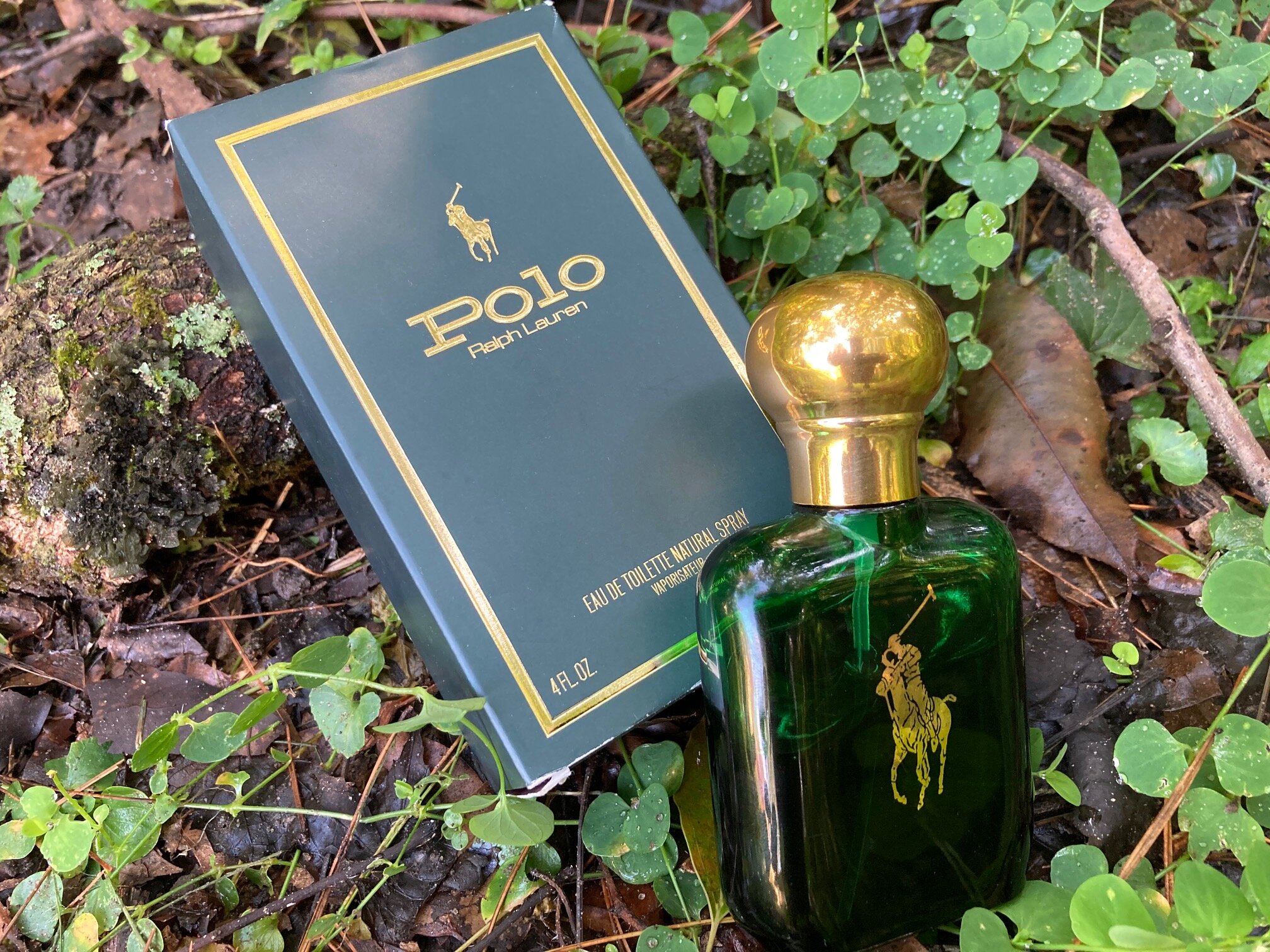Ralph Lauren Polo (1978)
1989. Music plays in an adjacent room. “There’s a little black spot on the sun today.” Three generations under this roof, but somehow peace is preserved. The weather has been dreary, adding a mild sense of mustiness to the indoor air. “It’s the same old thing as yesterday.” This house sits perched above a busy freeway on an aged city block, though it feels somehow insulated from the urban environment. Beyond the obvious hazards of steep staircases, a child feels free to roam the dwelling. “There’s a black hat caught in a high treetop.” Ghosts and shadows are imagined around every corner, but each room has an olfactory signature. Even a blind man might navigate this house, once acclimated. One of the upstairs bedrooms throws a heavy sillage, even from the top of the stairs. “There’s a flagpole rag and the wind won’t stop”.
Polo was the first masculine fragrance released by Ralph Lauren. It’s almost impossible today to imagine a time when the term “polo” referred only to a sport, and not the global fashion house. While the Lauren empire rests on a foundation of traditional American menswear, one might argue that the scent of Polo represents the floorboards overlaying that foundation.
From top to bottom, Polo assaults with an arsenal of evergreens and herbs. The perfume embraces a piercing pine tree essence enhanced with basil and thyme. There is the mere suggestion of cilantro and a pinch of cumin. As I reflect on it now, it occurs to me that Polo smells a bit like a well-stocked spice rack in the midst of a coniferous forest. This concept seems to match the long-standing image of the Ralph Lauren brand. It lies somewhere near the meeting point of rugged and refined. For whatever reason, I have strong color associations with this perfume – the box and bottle are appropriately deep green with gold accents. Everything about Polo conveys images of wooded undergrowth and the diverse canopy above – an autumnal swirl of earthen hues.
As one ventures through the vegetation, the fragrance takes on a decidedly more camphoraceous feel. Base notes of patchouli, leather, and oakmoss gradually emerge. As the fragrance wanes, one gets the impression of turpentine or varnish, such as might be found in a painter’s workshop. In a previous post, I referenced a note of tire rubber discernible in another perfume. Polo, too, emits a note approaching the smell of dense rubber or road tar baking beneath the blistering sun. Much of the appeal of Polo seems to lie in the juxtaposition of the forest-like elements with notes which have the impression of being industrial, man-made, and tactile. The perfume feels frayed and familiar, like the patina on an ancient leather-bound text.
To my nose, Polo is pure nostalgia. It was the first proper perfume I ever owned. As a boy, I’d previously had a few drug store potions in plastic bottles, but this was my gateway to designer fragrance. It is the olfactory equivalent of comfort food on a cold Sunday afternoon. It is unabashedly masculine, and perhaps even a touch vulgar by today’s standards. It can fill a room, for better or for worse. Almost everyone over the age of thirty has encountered the fragrance at some point, and many will have an instant reaction to this mossy, coniferous confection. Some will decry it as dated, no longer relevant, cliché. Others may find it uncomfortably redolent of a particular archetype, such as a naïve undergrad who is too eager to impress the opposite sex. I find it timeless, though it rests in my perfume wardrobe much like a reference volume on the shelf of a public library – it’s necessary, but rather rarely used.
I would note that this review is based on a bottle of Polo which dates to the 1990s. Like so many classic perfumes, Polo has eroded under the stress of International Fragrance Association (IFRA) restrictions on raw materials. The current version of Polo contains less oakmoss than it once did and lacks the photo-realistic greenery of the vintage perfume. Moreover, the Ralph Lauren Corporation has used multiple manufacturers over the years to produce Polo. In short, today’s Polo fails to thrill as it once did. Older bottles are often available for sale online, so seek one out if Polo suits your tastes.
“That’s my soul up there.”
Note: All quotations from “King of Pain” by The Police.



